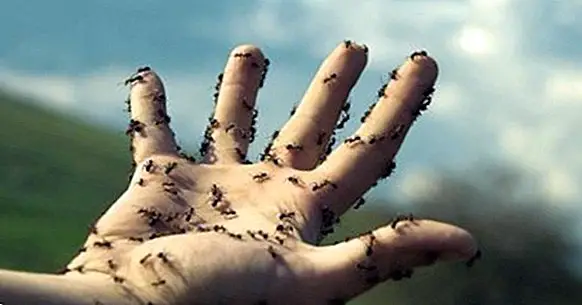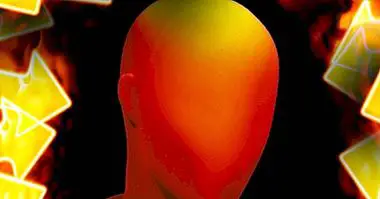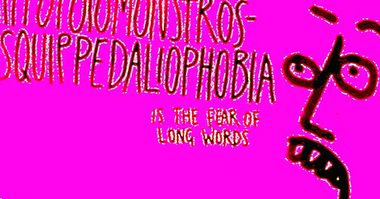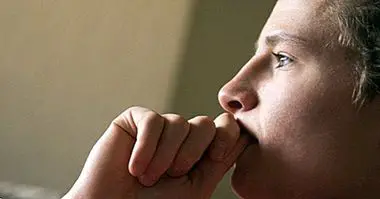Charles Bonnet syndrome: definition, causes and symptoms
Among the different perceptual systems, the visual system is the main tool through which our species perceives and reacts to its environment. From birth we have a visual capacity that allows us to detect the stimuli that surround us and react to them.
The view, however, is a sense that is evolving, developing mainly throughout the first year of life. From certain ages, it is common that the visual capacity is reduced and problems like tired eyes appear , cataracts and even glaucoma. Likewise, it is possible that the areas of the brain responsible for vision stop working with the usual precision, or that the visual connections are weakened with those of other sensorial and even intellectual processes.
This type of problems can cause our visual system to perceive stimuli that are not present, as in the case of the Charles Bonnet syndrome .
What is Charles Bonnet Syndrome?
Charles Bonnet syndrome is understood as the clinical picture characterized by the appearance of visual hallucinations in patients with problems in the visual pathway, whether these problems are located in the visual organs, their connections to the brain or the brain areas involved in the vision.
The main diagnostic criteria of this syndrome are the aforementioned presence of visual hallucinations and that these occur in total absence of cognitive and consciousness alterations, psychiatric, neurological or substance use disorders that could explain their appearance.
In other words, these hallucinations occur in healthy subjects with no other problem than the visual itself , having to rule out the presence of dementia (picture that sometimes also presents visual hallucinations), intoxications and other disorders.
Thus, the Charles Bonnet syndrome would appear mainly in healthy individuals who suffer no other alteration than the loss of vision. Since a large proportion of visual problems appear during old age, it is especially prevalent in the elderly population.
Visual hallucinations
The hallucinations present in this type of disorder are very variable , although they present a series of common characteristics such as occur with clarity of conscience, without presenting illusion of reality (that is, the patient knows that it is something not real), combine with normal perceptions, appear and disappear without there being a clear cause for it and they suppose a phenomenon that surprises the sufferer, although there is usually no great fear about them.
Regarding the content of the hallucinations that occur in the Charles Bonnet Syndrome, the perception of human figures or small animals is frequent (type of hallucination called lilliputian), as well as sparkles or bright colors.
The perception itself is clear and vivid, located in the external space of the person (that is, the false perceptions are perceived as if they were elements of the environment, although they are recognized as unreal), with a high level of definition that contrasts in great extent with the real perception (remember that this syndrome occurs in individuals with visual loss, who therefore see more blurred real stimuli).
These hallucinations occur without a clear cause that triggers them ; although stress, excessive or poor lighting or lack or overload of sensory stimulation facilitate their appearance. The duration of the hallucinations is usually short, being able to vary between seconds and hours, and they usually vanish spontaneously when closing the eyes or redirecting the look towards them or towards another point.
Causes (etiology)
The causes of this syndrome, as already mentioned, are in the loss of vision. This loss is usually due to damage to the visual system, usually due to macular degeneration or glaucoma and appearing mainly in elderly subjects. However, it is also possible that this loss of vision is due to the presence of a brain pathology that hinders the connection between the eye and the occipital lobe.
But, although an ocular disease causes the loss of vision, the reason for the appearance of hallucinations and the Charles Bonnet syndrome may be asked. In this sense there is a wide diversity of theories that work on the subject, being one of the most accepted is the Theory of Neural Distress .
This theory is based on the consideration that due to ocular disease there is a loss of nerve impulses that should reach the occipital cortex, the area of the brain responsible for processing visual information. This causes the brain to become especially sensitive to the stimuli that come to it , being affected in addition by other sensory stimulations that before the hypersensitivity of the receptors could form the perception of hallucinations, activating the visual area.
Treatment
With regard to the treatment of Charles Bonnet syndrome, at the psychological level, the first thing that must be done is the reassurance and provision of information to the patient, which can present great anguish when not knowing what is happening and believe that it presents some type of dementia or disorder mental. It must be explained that the visions you experience are a consequence of the loss of vision , it being recommended that ophthalmologists inform about the possibility of the appearance of this phenomenon as a consequence of the loss of sight in patients with diseases that degenerate this sense, encouraging patients to tell their experiences.
At the pharmacological level, in general this type of disorder does not respond to neuroleptics in a positive way, although some cases haloperidol and risperidone have shown some efficacy. Anticonvulsants such as carbamazapine have also been proposed.
However, the most useful in this syndrome is to treat the medical cause that causes the loss of vision, increasing as much as possible the visual acuity. It has been proven that some patients with this syndrome have not returned to hallucinations after being operated or treated for their visual problem.
Bibliographic references:
- Belloch, A., Baños, R. and Perpiñá, C. (2008) Psychopathology of perception and imagination. In A. Belloch, B. Sandín and F. Ramos (Eds.) Manual of Psychopathology (2nd edition). Vol I. Madrid: McGraw Hill Interamericana.
- Burke, W. (2002). The neural basis of Charles Bonnet hallucinations: a hypothesis. J Neurol Neurosurg Psychiatry; 73: 535-541
- Morsier, G. (1936) Pathogénie de l'halluci-nose pédonculaire. A propos d'un nouveau cas. Schweizerische Medizinische Wochenschrift; 27: 645-646.
- Luque, R. (2007). Hallucinations: Historical and clinical review. Psychiatric information, nº189.
- Podoll, K .; Osterheider, M. & Noth, J. (1989). The Charles Bonnet syndrome. Fortschritte der Neurologie und Psychiatrie; 57: 43-60.
- Santhouse, A.M .; Howard, R.J. & Ffytche, D.H. (2000). Visual hallucinatory syndromes and the anatomy of visual brain. Brain; 123: 2055-2064.
- Lapid, M.I .; Burton. M.C .; Chang, M.T. et al. (2013) Clinical Phenomenology and Mortality in Charles Bonnet Syndrome. J Geriatr Psychiatry Neurol; 26 (1): 3-9.
- Tan, C.S .; Yong, V.K. & Au Eong, K.G. (2004) Onset of Charles Bonnet Syndrome (formed visual hallucinations) following bilateral laser iridotomies. Eye; 18: 647-649.
- Yacoub, R. & Ferruci, S. (2011). Charles Bonnet syndrome. Optometry; 82: 421-427.



















